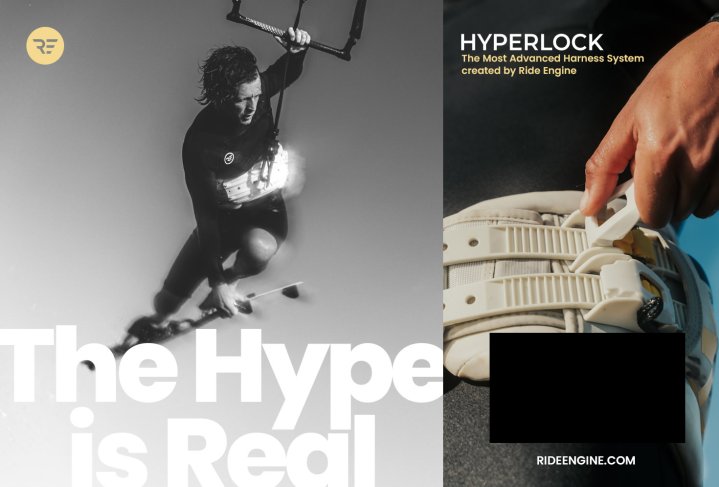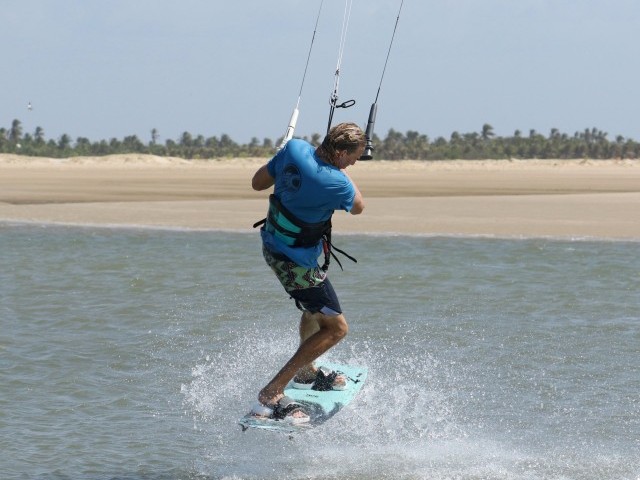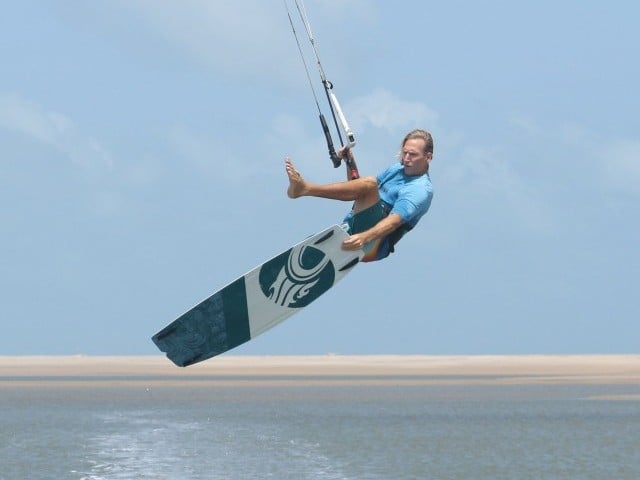
Shifty
Technique / Intermediate
Introduction
It would appear that the shifty is gaining in popularity. That said you may be reading this and not actually have a clue what we’re talking about. So to put you out of you misery focus your eyes on the two images in Pic A and Video 1 Christian is riding to right to left and Karine is riding left to right.
Those of you old school BMX freaks may recognise this as a kind of donkey kick, some may view it as a poor attempt to go blind, whilst others chortle “hallo sailor”, but in this case it’s an unhooked tweaked pop position that can lead to many a delicious move… The greatest part of all however is the simplicity of the shifty; it’s very doable and is often the perfect move to learn on the opposite tack to your favoured railey side.
As we’re after getting a position in the air and holding it for affect, the way you land it is entirely up to you. Some of you will feel more comfy coming down heelside, whilst others may prefer to land toeside – really it doesn’t matter. In Video 2 you can see a shifty with a landing to toeside.
A Subtle Blend
So first off let’s have a look at two of the most crucial parts of the shifty
1. The take off is super important, and sets you up either nicely for a fair crack at a shifty, or not so nicely for a railey. If you at Pic B just as Christian is taking off for his shifty you, can see two very specific things which are interlinked.
Firstly the board. It is taking off in very much a wheelie position. This means that Christian has a lot of weight over his back foot, so he has gone into the move with his hips rocked towards the back of the board. Secondly the board has not turned very far upwind, as it would for a railey. Because of this it has not turned under Christian’s body and he is able to keep his weight balanced over the board.
Secondly the body. As we just mentioned he is over his board. The easiest way to achieve this is to carve but look downwind rather than upwind over your shoulder. The beauty of this is that it means he can pop up hard off his back leg early in his carve. This way he’ll go up and not get pulled forward into an outstretched railey position. To do this he does not carve as hard as he can, and rather than dropping his bum right down onto the water, he stays more upright and as soon as the edge is in he pops up, by kicking down hard on his back leg.
2. Getting your body into the right place once you get airborne will allow you to do what you like with your legs and board without loosing your balance. In Pic C you can see that as Christian has taken off he has literally rested his chin on his back arm and stares downwind. To do this he has leant his head and shoulders forward towards the front of the board and this way the bar is mythically supporting his upper body. This stops Christian from falling forwards and loosing his balance. It also helps to keep the nose of the board down, allowing him to lift the tail and get into the shifty position.
You can also see that this happens immediately on take off and at the same time Christian’s back foot is already flicking around behind him. Now the style in which you shifty will vary from person to person, but your aim is to try and keep the front leg relatively extended so that you can pivot your bent back leg and board around it, whilst bringing you back foot up in a faux karate kick. With the body balanced you are unlikely to send your back foot and board too far round so that they start to rotate you and pull you around with them.
Doing It
When trying this on the water position the kite below 11 or 1. This is important because of the way you are leaning on you back arm; there is a tendency for the kite to rise up towards 12 o’clock. If you start with it sufficiently low this won’t matter.
Following Sequence 1
- Pic 1. Karine enters the move with good speed and carves hard but short, with her shoulders up and head looking downwind and her hips back over her back foot.
- Pic 2. Karine explodes up off her back foot and because she is looking downwind she can immediately get her chin over her back arm. At this point everything is leaning back.
- Pic 3. As soon as the board leaves the water Karine leans forward over her arm and starts to push her back foot around behind her, pivoting the board around her front leg.
- Pic 4. As her back foot goes around behind her Karine pulls it towards her bum by bending her knee. Now with the board pointing down and pushed around she is “tweaked” into a shifty. Nice. Try and hold this position until you feel you’re definitely on the way down.
- Pic 5. Once Karine thinks it’s a good idea to get her landing carriage down, she releases the hold on her legs and lets her feet drop down. She keeps her eyes focused on where she thinks she’ll land.
- Pic 6. This is the moment when you’ll know if your board wants to swing to toeside or not. You can see Karine’s back leg coming through as it drops.
- Pic 7. However Karine pushes her front leg out in preparation of a down wind landing and starts to steer the kite down to help pull her out of the move.
- Pic 8. Karine touches down tail first, off the wind and absorbs the impact. Quite brilliant.
Have a look at Sequence 2, running right to left, to see it from the front.
Common Problems
The most common problem folk experience with the shifty is that they end up doing a railey. If this is happening to you, as we’ve already mentioned, this is due to the fact that you’re edging too hard and too long going into the move. You really need to pop up into the shifty so don’t use your head to carve up into wind, and think more of the movement that you use in an air gybe. It can help to try the shifty with very little power as this way you won’t feel obliged to edge for your life.
The second problem, which you might encounter, is that you end up having both knees bent in the air. This is usually due to not having enough weight on your back foot on take off. Try and really extend your front leg so that your shoulders and hips are above the back foot. This way you’ll take off just from your back foot, and your front leg will already be extended.
Keystones
- Pop up not around
- Look downwind
- Lean your head forward onto you back arm
- Straight front leg, acts a pivot point
- Lift back foot up to bum
This technique article was in Issue 15 of IKSURFMAG.
Related
By Christian and Karine
Christian and Karine have been working together as a coaching team, running improver to advanced kitesurfing clinics since 2003.

























